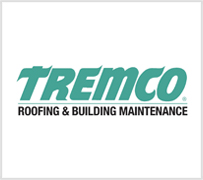
Home / News / What Causes Roof Shingles to Curl?

With the advances in roofing materials, the durability and longevity of your roof is improving all the time, particularly if you have asphalt shingles. However, the roof can only achieve its optimum lifetime if everything is done correctly. There are still things that can cause your shingles to curl, so stay on the alert if you are having a new roof installed.
Improper Installation — Roofing manufacturers have strict requirements for the installation of the roofing materials they’ve designed. Common specifications include the number of nails allowed per shingle, the length and type of nail, type of underlayment, outside temperature and humidity and so on. Failure to adhere to these specifications will often negate your product warranty and cause a variety of future problems.
Starting with nails, when they are too long, and are higher than the level of the shingle, the shingles can and usually will curl.
Moreover, while there are circumstances in which it is okay to install a second layer of shingles over the first, in many cases the condition of the existing roof will cause problems with the next. A prime example is curling shingles. If your current roof is curling, a new roof installed over the top will almost certainly have problems, including curling again. Also, existence of rot or mold on the existing roof will likely cause problems with a new system installed over it. Many manufacturers and products actually require a tear off of the old roof prior to installation - and usually for good reason.
Regarding temperature, some climates may require extra care during installation. Asphalt shingles have an adhesive strip on the back that adheres to the roof. As the shingles heat up in the sun, the adhesive bonds the shingles to the roof. In cooler climates with high wind, however, extra adhesive may be necessary to prevent wind from causing the shingles to lift before the shingles bond.
Poor Ventilation — We’ve mentioned many times that roofs need to breathe. The roof ventilation system pulls outside air through intake vents on the lower part of your roof and vented to the upper parts of the roof. The airflow prevents moisture build up and stops heat from being trapped in your attic. Heat buildup in your attic (along with heat from above) can cause your shingles to fade and to curl. An experienced roofer will make sure not to block vents, or may even suggest additional venting to ensure the longevity of your roof.
Old Roofing Material — Toward the end of its lifespan, no matter how good the material, singles can still begin to curl, so it’s time to start exploring new roofing options.
Defective Products — Despite all the safeguards in place in the industry, it is possible that bad products are out there. Recently, one of the larger manufacturers was the target of class action lawsuit because the shingles were carelessly manufactured and started curling almost immediately after installation.
Preventative Measures
You can take preventative measures to make sure your roof lasts as long as possible. First, hire a professional roofing company with years of experience. Make sure they are licensed, bonded and insured. Check their reputation on place like the Better Business Bureau and Angie’s List. Ask for references you can check to make sure other clients were pleased with their work. Make sure the company is willing to warranty its work.
By hiring an experienced company, you’ll solve several problems. First, the install will be done correctly. Second, with its experience, the roofers will know what products work or don’t work in your area and be able to avoid poor quality materials. They’ll also help make sure your product warranties exist and remain valid. It is up to you to ask plenty of questions and have the roofers check to make sure your attic is properly ventilated.
Last but not least, retain the services of the roofers on a yearly basis to do maintenance and routine repairs. Fixing little problems now can prevent big headaches later. In particular, expansion and contraction on the roof can cause roofing nails to work themselves up through the material. Remember we said that nails that are sitting up can cause shingles to curl. In addition, especially here the Southwest, Monsoon season can cause all types of roof damage due to high winds, torrential rain, wind-driven debris and hail. That damage should be repaired as quickly as possible to prevent even greater problems from developing.











